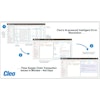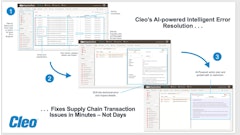
Healthy business relationships are built around mutually beneficial incentives. Trading partners need to look for compelling reasons to establish and renew contracts, such as increasing margins and sales, more efficient and transparent operations, and the agility to make rapid adjustments as market and economic conditions change. The process of getting goods from manufacturers to distributors to customers is often complex and dynamic, which is why rebates have become the currency of business partnerships across the supply chain.
Rebates benefit every trading partner by bringing order volume into alignment with sales goals, market conditions, and budget constraints. When buyers purchase a certain amount of a specific product, vendors use rebates to return part of the original price. This allows vendors to customize the sales mix, which creates incentives for customers to continue doing business with them – a mutually beneficial arrangement for both trading partners. While this process may seem straightforward, rebates are becoming more complex all the time, which leaves less tolerance for error and increases the need for cooperation.
Despite decades of talk about ‘supply chain digitization’ there’s still far too many siloes across supply chains, which makes it difficult for trading partners to develop joint business plans that fully leverage the value of rebates. This is why the future of rebate management is collaborative – a shift that will require trading partners to consolidate and share data, develop joint decision-making processes and focus on securing sustainable growth.
Effective rebate strategies are built around collaboration
Rebates help trading partners build trust, establish long-term relationships and serve customers better together. Visibility is a key element of healthy supply chain collaboration – suppliers and customers need access to a single source of truth to create mutually beneficial business strategies and manage increasingly complex rebates. It’s no surprise that over two-thirds of supply chain leaders say they have “implemented digital dashboards for end-to-end supply chain visibility,” according to a recent McKinsey survey.
However, siloes across trading relationships lead to separate and disjointed purchasing, sales, and finance conversations. For example, siloes cause finance teams to miss accruals and create confusion for accounts receivable departments that are left to wonder where funds originated. Collaboration also helps supply chain partners identify and address risks. A 2023 PwC survey found that 86 percent of supply chain leaders think their companies should “invest more in technology to identify, track and measure supply chain risk.” A core purpose of this technology is the elimination, or at least mitigation, of data silos.
Suppliers and their customers are dependent upon each other to get products to customers. When supply chain partners maintain open lines of communication, share data and bring operations into alignment, they will be able to deploy more sophisticated rebates and maximize the value of their relationships.
Making the deployment of rebates more strategic
While rebates can be used to mitigate risks and build stronger relationships between trading partners, they’re also powerful engines of revenue creation. When suppliers and distributors are aligned on business goals, KPIs, and data collection, they’re capable of exploring more comprehensive (and complex) rebate agreements that meet the unique needs of both partners. This is how rebate managers can become rebate strategists.
Unlike simple financial tools such as discounts, rebates help trading partners create incentives based on concrete business goals, inventory and volume fluctuations, and the individual circumstances of each business relationship. This allows trading partners to be more outcome-oriented – they can set specific targets, use shared data to track progress and adapt as market conditions change. Rebate strategists sometimes use special pricing agreements that establish annual, quarterly, or even monthly incentive bands, as well as many different pricing tiers. While discounts are short-term incentives that trading partners quickly forget, rebates facilitate long-term behavioral change.
Rebates don’t just help suppliers and distributors forge better relationships – they also help trading partners keep pace with demand, make the right volume adjustments when necessary, and ultimately serve customers more effectively. At a time when consumer expectations are rising and supply chain relationships are under strain (due to the recent shift toward regionalization, for instance), strategic rebate deployment can help companies simultaneously meet their customers’ and trading partners’ needs.
How to negotiate and manage rebates
Trading partners need to be capable of consolidating rebate data in a single place, using this data to make informed decisions about which deal types to consider, and implementing rebate programs that give suppliers, distributors and customers the support they need. In other words, centralization is a vital component of any successful rebate program. When trading partners have access to a single platform, they will be able to communicate and collaborate more easily, quickly respond to requests and disputes, and determine the best course of action with ample input from all relevant stakeholders.
With a centralized rebate management platform, trading partners can negotiate and implement many types of rebate deals all in one place. While rebate programs often start with simple annual agreements, they have a tendency to evolve toward greater specialization (and complexity) over time. This allows trading partners to create more targeted incentives – a process that builds stronger supply chain relationships, secures long-term growth, and earns customer loyalty. Complexity used to make rebate management slower and more cumbersome, but today’s rebate management tools have helped trading partners move past this status quo.
Two-thirds of manufacturers say they offer annual rebate programs to influence the long-term behavior of customers. But the mere existence of these programs isn’t enough – trading partners need to become more strategic about how they use rebates, which will require them to prioritize collaboration and data sharing on a single unified platform. The future of rebate management will require company leaders to move from reactive to proactive strategies and from siloed to collaborative operations – shifts that will increase margins and sales, drive behavioral change and grow the business.
















![Pros To Know 2026 [color]](https://img.sdcexec.com/mindful/acbm/workspaces/default/uploads/2025/08/prostoknow-2026-color.mduFvhpgMk.png?ar=16%3A9&auto=format%2Ccompress&bg=fff&fill-color=fff&fit=fill&h=135&q=70&w=240)



